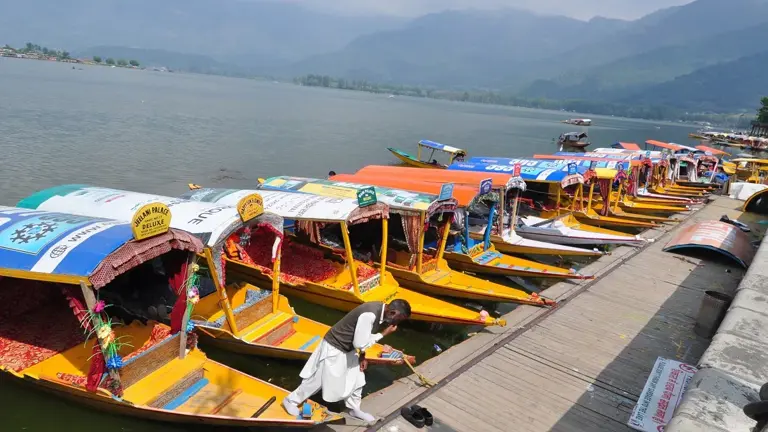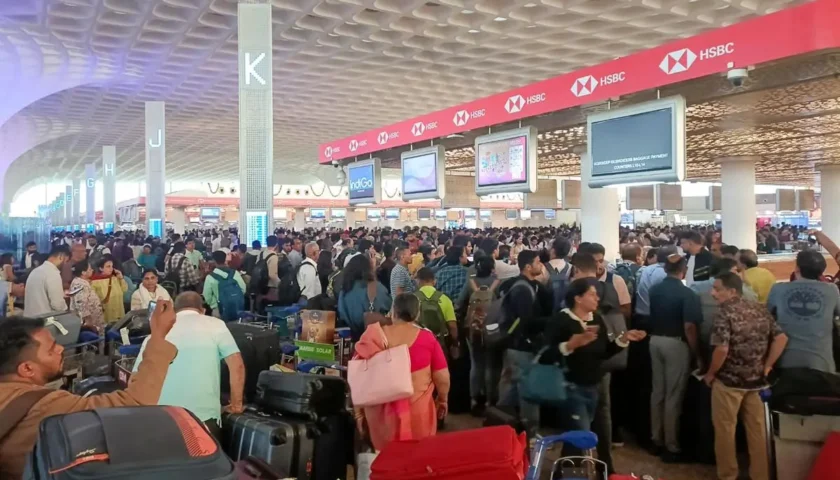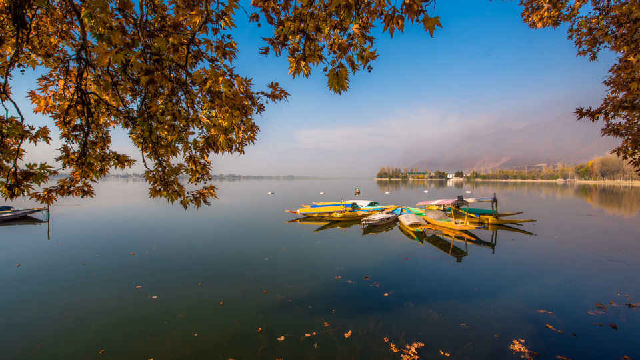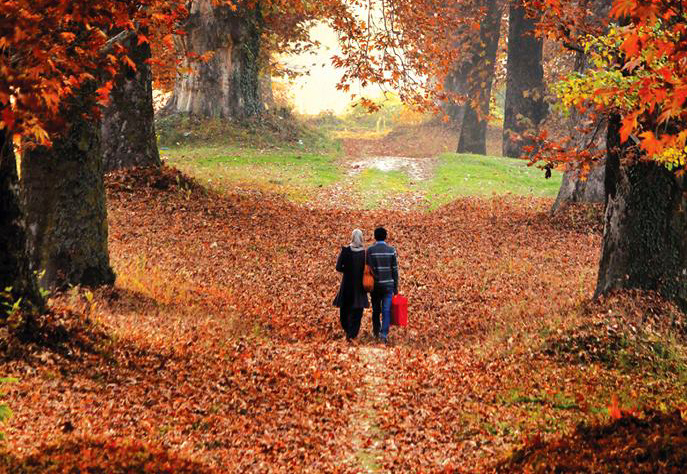Kashmir Tourism Still Under Pahalgam Attack Shadow, Early Snowfall Sparks Hope for Winter Revival
By: Javid Amin | 15 October 2025
Kashmir’s tourism sector has long been a tale of breathtaking beauty and fragile hope. In 2025, that fragility was starkly exposed when a brutal attack in Pahalgam on 22 April claimed 26 lives—most of them tourists. The tremor of that tragedy reverberated across the Valley, triggering cancellations, shuttered businesses, and despair among stakeholders.
Yet, as autumn descended, an early October snowfall blanketing Gulmarg’s high slopes, Sonamarg, and Nilgarh stirred more than winter breath—it stirred hope. For many in the tourism and hospitality world, snow is not just weather, but a lure, an emotional balm, a narrative of Kashmir reclaimed.
This article traces the fallout from the Pahalgam attack, the painstaking recovery efforts, the emerging signs of revival, and the long road ahead. We ground the narrative in eyewitness testimonies, security reports, industry voices, and media crosschecks. The Valley stands at a crossroads between fear and resilience.
The April 22 Pahalgam Attack — How It Unfolded & Its Aftermath
A. The Attack: Facts & Narratives
On 22 April 2025, in the idyllic Baisaran meadow near Pahalgam (Anantnag district, South Kashmir), a group of militants emerged from forested terrain and opened indiscriminate fire on tourists. The meadow, accessible only by foot or pony rides, left victims vulnerable and delayed response.
Initial witness accounts reveal that the militants were dressed in camouflage, carried modern small arms (AK-47s and M4s), and reportedly used communication equipment. One tourist, zip-lining nearby, inadvertently recorded parts of the attack in horrifying motion.
The attackers seemed to have engaged in a selection process—reportedly querying some victims about their religion or other markers before opening fire. A brave local pony operator, Syed Adil Hussain Shah, is said to have attempted to wrest the gun from a militant and protect tourists; he was fatally shot in the struggle.
Casualty figures, as officially reported, stand at 26 killed and 20 injured. Of the 26 deaths, 25 were tourists and one was a local. Most of the dead were Hindu, though victims from other faiths were also among them, and one local Muslim (the pony operator) lost his life.
The attack is claimed by The Resistance Front (TRF), believed to be a proxy front of Lashkar-e-Taiba (LeT). In July 2025, in a major diplomatic step, the U.S. designated TRF as a Foreign Terrorist Organization (FTO) and Specially Designated Global Terrorist (SDGT).
This assault is among the deadliest attacks on tourists in Kashmir in recent decades, often compared to the 2000 Nunwan attack.
B. Immediate Aftermath: Fear, Shutdowns, and Security Moves
Mass panic and evacuation
In the immediate chaos, tourists and local helpers scrambled downhill from the meadow. Some were carried on ponies or improvised stretchers to safety. Medical help arrived later; two severely wounded were airlifted to a military hospital in Srinagar.
Local pony-handlers, guides, and residents aided in rescue, carrying injured persons out to roads where ambulances waited.
Tourism closures & cancellations
Within days, authorities shut down 48 of 87 government-authorized tourist resorts as a precaution. Many prominent tourist sites were also closed across the Valley.
Bookings were cancelled en masse; tourist inflow dropped by over 50 % compared to the same period in 2024. The economic impact extended beyond tourism: even traditional markets like Kashmir’s demand for sacrificial goats for Eid fell sharply.
Diplomatic fallout was swift. India suspended participation in the Indus Waters Treaty, closed the Attari–Wagah border crossing, revoked Pakistani visas, and reduced diplomatic staff. Pakistan retaliated with similar moves.
Security operations & investigations
India launched a massive counterterrorism operation, “Operation Mahadev.” In July 2025, three terrorists—Suleman Shah (alias Faizal Jatt), Abu Hamza, and Yasir—were killed in Harwan jungles near Srinagar. The investigation was aided by satellite phone tracking of a device linked to the attackers.
Hundreds of suspected overground workers (local supporters, sympathisers) were interrogated, and more than 150 persons arrested. Investigators linked safe houses in Muzaffarabad and Karachi to the operation.
Political & social reaction
Across Kashmir, protests, shutdowns, and calls for justice broke out. Shops remained closed in solidarity, especially in Srinagar, Pahalgam, Anantnag, Baramulla, and other towns. Religious leaders condemned the killings, calling them an attack on Kashmiriyat—the ethos of local harmony.
At the national level, Prime Minister Modi condemned the attack, vowed to punish perpetrators, and cut short a visit abroad to address the crisis.
The timing was especially charged: the attack occurred while U.S. Vice President JD Vance was visiting India, further raising geopolitical tensions.
In foreign diplomacy, the UAE strongly condemned the attack, offered condolences to victims, and reaffirmed its rejection of violence.
The Long Summer That Wasn’t — Tourism in Decline
A. Near-Total Summer Shutdown
The summer season (which typically drives the highest tourist inflows in Kashmir) turned into a nightmare. The Pahalgam tragedy instilled fear and uncertainty. As bookings evaporated, many tourists abandoned planned trips. Hotels, guesthouses, shops, guides and operators across Pahalgam, Gulmarg, Sonamarg, and hinterland regions saw occupancy rates plummet.
Several tourism stakeholders now call the 2025 summer “a lost season.” In fact, even autumn did not bode much better.
Some sites remained shut for months. Only after security reviews did authorities reopen approximately 28 of the earlier-closed tourist destinations. Later, 16 more were reopened under government orders.
B. Economic & Social Ripples
The tourism collapse did not remain confined to hotels and travel agents. Many allied sectors—transport, local handicrafts, eateries, pony operators, guides, drivers—also felt the shock.
Reports suggest:
-
-
Revenues from hotels and guesthouses dropped dramatically.
-
Transportation operators (taxis, local buses) lost their tourist clientele.
-
Local handicraft sellers in bazaars, often reliant on tourist footfall, saw sales dry out.
-
Hotels had to slash tariffs, sometimes to unprofitable levels.
-
Traditional local income sources (like goat demand for Eid) also took a hit.
-
The crisis spilled beyond Kashmir’s borders. For instance, Amritsar’s Bakar Mandi, a major livestock supplier to Kashmir during Eid, witnessed a collapse in demand due to the economic slowdown.
C. Confidence Deficit & Psychological Blow
The attack didn’t just damage buildings or bookings—it damaged trust. Many would-be travellers began perceiving Kashmir as unsafe, despite reassurances. Locals report the “atmosphere of tourism” has not returned.
In the local psyche, grief, anger, and fear combined. The tourism dream, for many, felt fractured. Some industry voices say that mere safety assurances would not suffice; emotional trust must be rebuilt through narratives of resilience and shared stories.
The Silver Lining: Early Snowfall & Revival Hopes
A. October Snow: A Symbol More Than Weather
In early October 2025, as autumn deepened, snow began gracing high altitudes in Gulmarg (Afarwat peak), Sonamarg, and Nilgarh. Hindustan Times These snow flurries stirred excitement within Kashmir’s tourism fraternity—they were early, unexpected, and symbolically potent.
Many hotel owners, travel agents, and tour operators see snow as the Valley’s emotional pull. As Wali Mohammad, President of the Shikara Association, noted: “Snowfall always brings back the Valley’s charm.”
Although footfall has not surged yet, inquiries are rising from domestic honeymooners, adventure travellers, and snow lovers. The seasonal banner has changed: from summer meadows to winter slopes.
B. Signals of Pick-Up
While numbers remain modest, certain trends hint at revival:
-
-
Since August, around 3,000 foreign tourists and many more domestic visitors have ventured to Kashmir.
-
Tour operators report a growth in booking queries, especially for December onward.
-
The early snow, when paired with promotional campaigns, has begun reshaping narratives—tourism media and social accounts have amplified the imagery of snow-clad Srinagar and Gulmarg.
-
Travel trade bodies are already exploring winter packages, revising tariffs, and timing special campaigns.
-
Still, some hotel owners remain cautious. As one Gulmarg hotelier put it: “Future bookings are not happening; the atmosphere of tourism is yet to happen here.”
C. Why Snow Matters More Than Just Aesthetics
Snow operates on multiple levels:
-
-
Emotional resonance: For many Indians, Kashmir’s identity is tied to snow — glaciers, winter sports, romance. Snow reclaims that emotional banner.
-
Attraction magnet: Skiing, snow treks, snowball fights, ice lakes—these draw a distinct traveler segment.
-
Extended season: A strong winter season broadens tourism beyond the summer months, making the sector less dependent on monsoons.
-
Narrative reset: Snow can shift conversation away from fear, tragedy, or security, toward beauty, peace, and nature’s endurance.
-
Thus, in a year scarred by violence, snow may offer more than a spectacle—it may offer the story of resurgence.
What Needs to Happen for a Real Winter Revival
A snowfall, even a beautiful one, is only part of the strategy. To rebuild confidence, the tourism sector must stitch together safety, story, support, and sustainability.
A. Safety & Security — The Nonnegotiable Foundation
Without credible security assurances, tourists will remain hesitant. Key measures that must be visible:
-
-
Transparent security protocols at tourist hubs (Gulmarg, Sonamarg, Pahalgam), check posts, trekking routes, parking lots.
-
Guided escort systems for high-risk routes—armed escorts or secure guides, especially at night or in remote paths.
-
Quick response teams and first-aid infrastructure (ambulances, helipads) at key spots.
-
Digital tracking & distress helplines for travellers in remote zones.
-
Public communication of past counterterror successes, arrests, and ongoing vigilance—for instance, narrative of “Operation Mahadev” and elimination of perpetrators.
-
Coordination with central agencies (CRPF, army, paramilitary), visible presence by uniformed but non-intimidating security, to reassure rather than scare.
-
Safety is not just about being safe—it must feel safe, especially in the absence of fear.
B. Aggressive and Strategically Phased Promotion
Messages must shift from damage control to storytelling—inspiring, trust-building, emotionally resonant.
-
-
“Kashmir is Alive” campaigns featuring real visitor stories, videos of snow trails, guest testimonials, and behind-the-scenes resilience.
-
Partner with influencers and travel content creators (especially from metro India and Southeast Asia markets) to publish their snow journeys.
-
Targeted regional roadshows (e.g. Kolkata, Bangalore, Mumbai) promoting winter packages, as some campaigners have suggested.
-
Digital refresh: SEO-optimized landing pages, social media push around #SnowKashmir, #WinterComeback, live cams from Gulmarg peaks, interactive maps.
-
Partner with airlines and travel aggregators for co-branded promo deals.
-
Promote new train/rail connectivity options (for example, the Vande Bharat via Chenab Bridge is being marketed).
-
Special press trips for journalists and travel editors to experience safe winter Kashmir and publish positive narratives.
-
C. Revival Packages & Incentives for Businesses
Tourism businesses—hotels, guesthouses, guided tours, transport operators—have borne the brunt. To reenergize them:
-
-
Subsidies / soft loans / grants for upgrading infrastructure (heating, insulation, snow equipment).
-
Tax incentives / reductions for the winter season to help manage low margins.
-
Package bundling: hotels + guided snow treks + meals + local cultural performances at fixed bundled prices to distract from price haggling.
-
Flexible refund & safety policies to reassure buyers.
-
Insurance support for businesses against cancellation risks.
-
Skill upgradation workshops for staff (multilingual training, winter equipment use, customer service reinforcement).
-
Collaborative promotions—hotels and local experiences (shikara rides, wildlife tours, local cuisine) can cross-promote to each other.
-
D. Emotional Storytelling and Community Engagement
Rebuilding trust and narrative is as much emotional as economic.
-
-
Local voices: riders, pony operators, guides, villagers sharing “our Kashmir persists” stories.
-
Memorial storytelling: Gracefully commemorating victims while showcasing resilience, e.g. plaques, memory walks, but not trauma.
-
Cultural immersion: winter cultural festivals, music, Kashmiri food trails, local arts exhibitions to attract non-snow seekers too.
-
Engaging diaspora and Kashmiri diaspora to act as ambassadors and return visitors.
-
E. Diversifying Beyond Snow
While snow is crucial, overreliance on it is risky (climate, variable snowfall). Other segments to build:
-
-
Winter trekking routes (where climatology allows)
-
Birdwatching / wildlife safaris / nature trails in lower altitudes
-
Heritage and cultural circuits (mosques, temples, Mughal gardens)
-
Local crafts / shopping circuits
-
Health & wellness retreats (spa, yoga, Himalayan aromatherapy)
-
Off-season conferences / weddings (packages for destination weddings in snow)
-
This way, even if snow is light, tourism need not collapse.
Challenges, Risks, and Caveats
While optimism is merited, certain headwinds must be acknowledged and mitigated.
A. Security Relapse & Uncertainty
Terror incidents or even rumors will heavily discourage travellers. A single lapse can undo months of narrative rebuilding. Constant vigilance and zero tolerance for security lapses are essential.
B. Weather Variability & Climate Change
Early snowfall is a good sign, but unsteady winters may produce weak snow or delayed seasons. If snow arrives late or in patches, visitors may leave disappointed.
C. Infrastructure & Accessibility Limitations
Winter accessibility (road blockages, avalanches, cold damage) may hamper transport. Remote destinations require adequate connectivity, power, heating, and backups.
D. Cost Pressures
Heat, snow clearing, infrastructure maintenance, power costs—operating winters is more expensive. Without subsidies, many small operators may struggle to survive.
E. Perception Lag
Media narratives of tragedy linger longer than images of snow. Conversion from interest to booking can be slow. Rebuilding reputation takes sustained time and effort.
F. Coordination and Implementation Weaknesses
Promises must translate to execution. Delays in subsidy release, poor coordination among agencies (tourism, home, police, civil administration) can frustrate ground momentum.
G. Dependence on Domestic Travel
Given safety concerns, foreign tourists may remain reluctant for some time. The revival may need to lean heavily on Indian domestic markets initially, which means pricing and messaging must pivot accordingly.
Voices from the Ground: Stakeholders Speak
Hoteliers & Operators
Manzoor Pakhtoon (Sonamarg hotelier) encapsulated the mood: “We need more than snow — we need stories of resilience.” (From your summary)
Another hotelier in Gulmarg, Mukhtar Shah, cautioned: “Although attempts are being made … even chief minister Omar Abdullah also visited many places but the response of visitors is not that good. The atmosphere is not yet of tourism here.”
Travel Agents
Sajad Kralyari, Secretary General of Travel Agents Association of Kashmir, said after the snowfall: “The snow in first week of October … have pushed tourism numbers up this month … we are expecting some rush from November to January.”
Government Leadership
Chief Minister Omar Abdullah has expressed optimism but conceded that the recovery has been slower than hoped. He acknowledged that summer was “entirely lost” and even the autumn season was disappointing, but pinned hopes on a strong winter.
He projected that snowfall would be heavier than in past winters and that the winter months could revive the tourism economy.
Officials say the government is actively promoting tourism internationally (for example, sending teams to Singapore and metros in India). They are also reopening tourist sites in phases (28 reopened after closure, 16 more officially reopened in June)
Security & Investigation Officers
The strategy of surveillance, intelligence, and counterterror operations has produced some results (e.g. July 2025 killings of three terrorists). Investigations suggest operatives in Pakistan were involved, and safe houses traced across the border. The designation of TRF as a US-recognized FTO has bolstered international cooperation.
But ground intelligence warns that sleeper cells, sympathisers, and subtle insurgent tactics require constant adaptation.
Looking Forward — A Strategic Roadmap
Below is a suggested phased roadmap for the remainder of 2025 and beyond, aimed at achieving sustained revival.
| Phase | Timeframe | Key Focus | Actions |
|---|---|---|---|
| Immediate (Oct – Dec 2025) | Leverage early snow, winter demand | Safety visibility, promotional push, pre-bookings | Launch “Winter Kashmir” campaign; provide security briefings; enable ready winter packages; invite press visits; reassure via testimonials |
| Mid Term (Jan – Mar 2026) | Sustain post-snow demand | Off-snow segments, festival tie-ins | Winter treks, wellness retreats, cultural festivals; package for Valentine’s or honeymoon; cross-market with neighboring states |
| Annual Stabilization (2026 onward) | Build resilience | Diversification, quality standards, marketing sustainment | Athena of snow + non-snow circuits; maintain content calendar; continuous safety audits; capacity expansion; regional markets (SE Asia) |
| Community & Legacy Building | Local ownership, storytelling | Engage locals, fiscal resilience | Skill development, profit sharing, tourism education; heritage branding of villages; local ambassadors |
Key tenets to embed: safety first, experience second, narrative always.
Key Takeaways & Reflection
-
The 2025 Pahalgam attack was a profound blow to Kashmir’s tourism, triggering weeks of shutdowns, cancelled bookings, and economic loss.
-
But nature intervened — early snow in October has become a beacon of hope.
-
Yet snow alone will not suffice; a holistic strategy of visible security, narrative rebuilding, smart marketing, and business support is essential.
-
The government, industry, and community must act in coordinated, sustained fashion—both on the ground and in perceptions.
-
The road ahead is rocky, but resilience, authentic storytelling, and incremental confidence building can help Kashmir reclaim its stature as a world-class winter destination.
Kashmir’s beauty has always been more than its peaks or meadows—it lies in its people, its stories, and its ability to endure. In this darkest chapter, the early snow suggests that light may return. The coming winter may well be Kashmir’s reckoning: a test of whether tragedy severs its tourism lifeline—or strengthens it anew.




